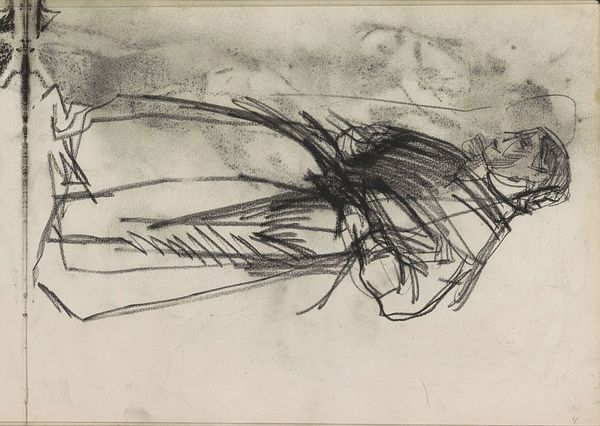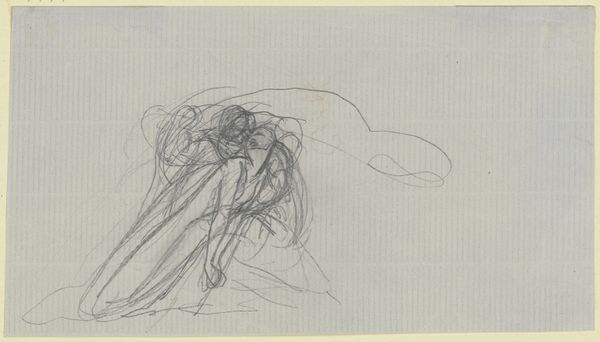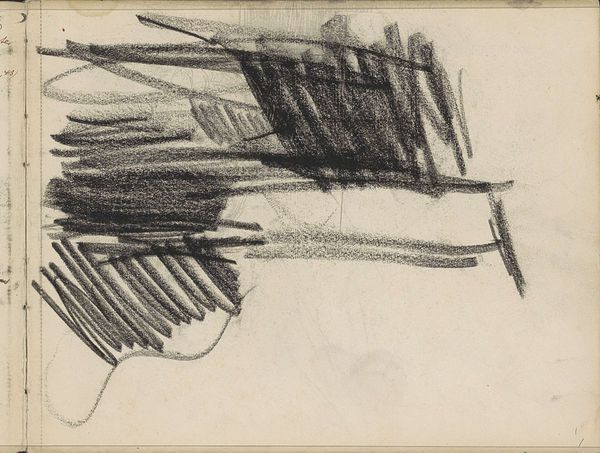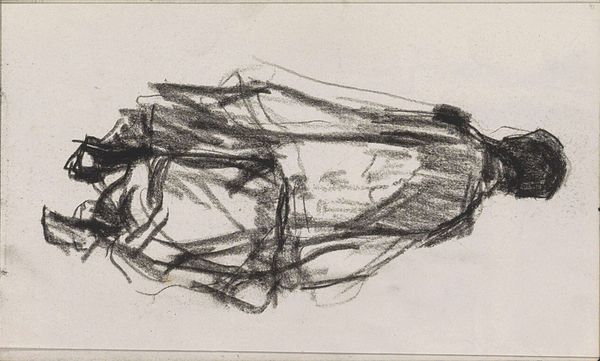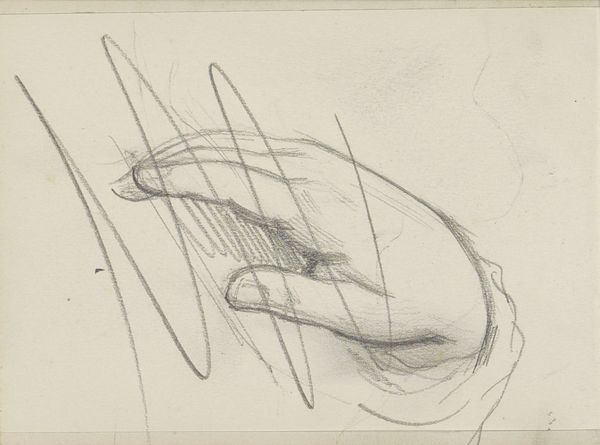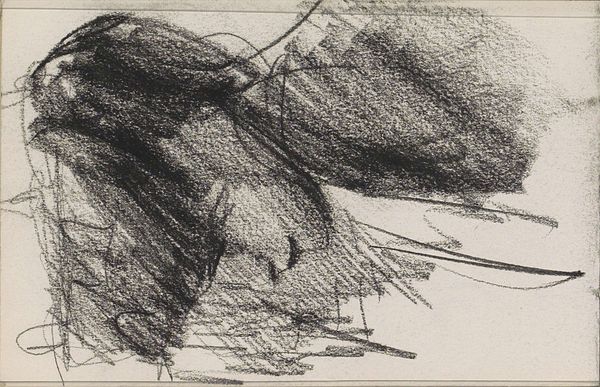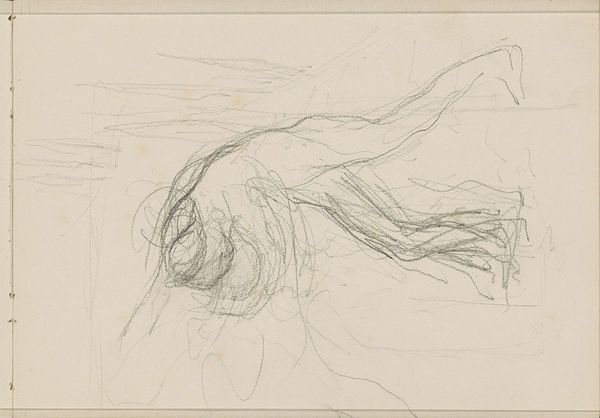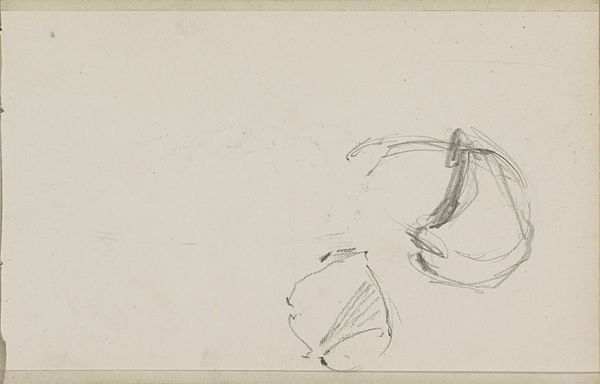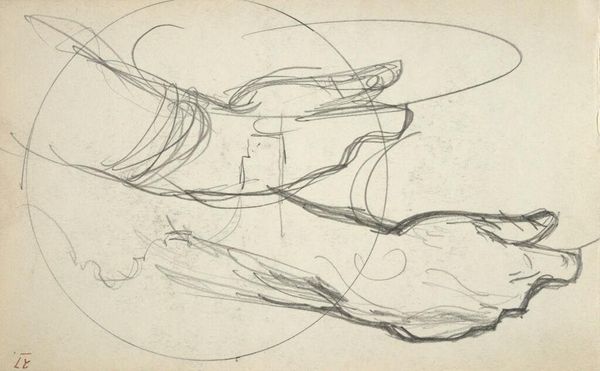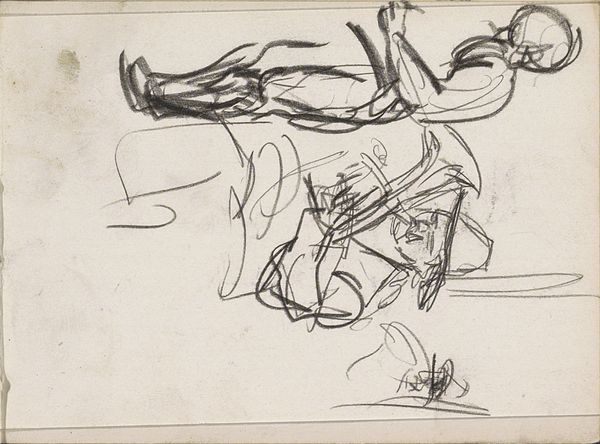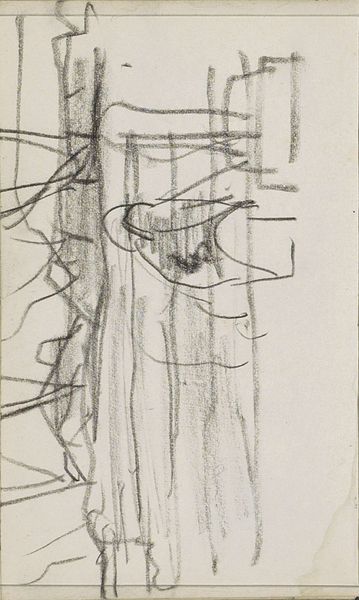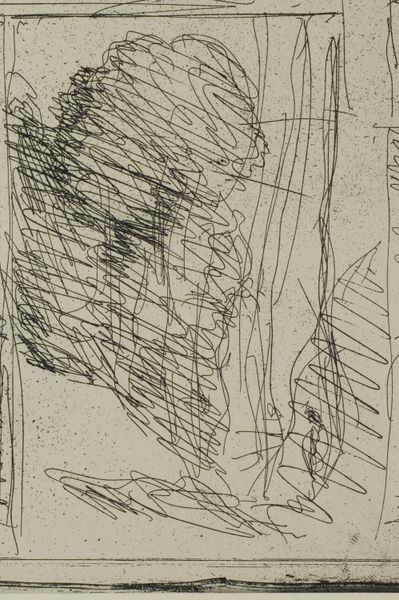
Copyright: Rijks Museum: Open Domain
Curator: Here we have George Clausen's pencil drawing, "Man die een last op de schouder draagt," created around 1875. It's a figure study, academic in style but also infused with a Romantic sensibility. What strikes you initially about this work? Editor: The immediate impact is one of burden and instability. The lines are so kinetic, suggesting movement, struggle, and weight. I find the composition unsettling, almost unfinished in its appearance. Curator: I agree about the sense of burden. Clausen’s focus seems less on perfect anatomical rendering and more on capturing the labor inherent in the act of carrying something heavy. Consider the economic conditions and the lives of working people in the late 19th century – that labor would have had great material consequences. Editor: Absolutely. Though a quick sketch, there's careful attention paid to how line and shadow define the musculature contorted under pressure. The raw, almost frantic quality of the lines conveys this struggle more powerfully than any detailed depiction could. There’s a philosophical bent too; is the medium here also reflective of a certain class identity? Curator: I think the choice of pencil, a readily available and affordable material, supports that reading. The sketch-like quality is not just about process, but a reflection of the disposable lives of the working class— bodies spent quickly for the engine of progress. Editor: I see what you mean, but let's not dismiss the aesthetic qualities too quickly. The economy of line, the contrast between light and shadow – it demonstrates Clausen's formal training and skill in expressing a great deal with minimal means, elevating the quotidian, really. Curator: True, the interplay between Romantic expressiveness and Academic tradition cannot be ignored. There’s certainly artistry in conveying such weight and movement with so few lines. Yet the artwork, particularly when viewed from our current historical perspective, resonates most poignantly in its portrayal of class struggle and the burden of labor. Editor: Well said. Ultimately, its power lies in that intersection – how the artist translates social realities into tangible visual experiences through deft handling of form and material. Curator: Precisely. It makes you think about art and its connection to society, history and what we choose to commemorate, or, sometimes, allow to fade.
Comments
No comments
Be the first to comment and join the conversation on the ultimate creative platform.
